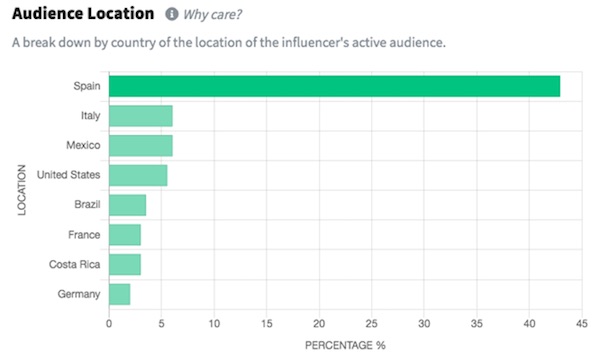
by James Van, Director of Career Services and Professional Development at SoloLearn
It’s 2am, and Egor is staring at his phone intently on his couch at home. He’s finished a long day at his current job in finance and M&A, but he is eager to tap away on his phone, consuming Python courses. His latest project required him to work with a team to help crunch some very large data sets from mobile network carriers. His firm brought in a team of data scientists to help his team make sense of the data. Over time as he continued to work with this team of data scientists, he realized that their ability to find patterns and also write algorithms to help predict user behavior was very intriguing to him. After learning more about their work, he made the decision – that he wanted to do that too!
But where to start? He did a quick google search to learn more about classes he would need to take, and where to start. He soon realized that watching long tutorials and videos was difficult for him to complete and retain the information. He also wanted to practice what he learned before moving onto the next step. Because he commuted into work everyday, he wanted to maximize his time. He eventually downloaded the SoloLearn App to learn Python, the programming language most commonly used by Data Scientists. That was two years ago. He is now a practicing data scientist.
What is Corporate Learning & Development?
So what exactly is learning and development, and why is it important?
Learning and development may differ in scope, function, strategy, and delivery from one company to the next. Consensus is that L&D serves to help train and skill your employees to meet ongoing learning needs. Typically, the L&D function includes onboarding new employees, mandatory employee training (think about topics such as harassment, diversity & inclusion, etc), leadership development, new product training, and enrichment curriculum.
The L&D function itself is important for the following reasons:
Company Culture: Company culture is often taught, upheld, and perpetuated in classes and training. Values that you hold near and dear to your heart are reinforced. Establishing a culture of lifelong learning, curiosity that leads to innovation, and fostering the professional development of your employees will help you attract talented candidates, engage your employees with managers and each other, increase productivity, and help you retain your most talented employees.
Onboarding New Employees: Your small business is growing–how do new employees adapt to your business culture, learn nuances of your products and services, learn about organizational structure, processes and tools/tech stack? Here is where your new employees are oriented, as to set them rowing at the same cadence as the others in the boat, so to speak. After the interview/selection process, the first 90 days of a new employee is critical in setting that person up for success in your company. Will that person feel supported? Will they fit in and assimilate into your work culture successfully? Are they able to learn and navigate processes, tools, platforms, and development spaces easily and quickly, so that they can focus on job responsibilities as soon as possible? How are they initially supported by their manager? If an engineer, do they pair with another senior engineer so that the more senior engineer can monitor progress and catch and correct any potential errors/mistakes early and often?
Training: As much as we have trust and faith in all of our employees, ongoing training and reinforcing good behavior and being a “good work citizen” is a critical part of maintaining a healthy and productive work culture. Diversity training, workshops on workplace harassment, time management, leadership development are examples of popular workshops that reinforce company culture principles, and also serve a strategic function.
Recruiting: Setting up learning programs will not only help you attract new employees, but also aid in strategic efforts. According to Jennifer, a corporate recruiter with 20 years of recruiting technical talent for various large multinational companies, a corporate learning program is an essential part of the employee benefits package: “Most candidates expect to have learning programs and perks as part of the total compensation package. Most assume that your company will offer programming and aid to invest in their ongoing learning and professional development.” Some savvy companies have developed learning programs to coincide with their recruiting and internal growth/promotion strategies. In order to attract candidates earlier in their careers and hire them into more junior roles, companies are able to invest in the professional development of promising talent by offering learning tracks designed to fast-track their professional development and earn promotions. While this strategy is not new, it is becoming a staffing solution for companies that have increasing demand for technical talent and struggle to compete in a global hiring marketplace to hire from a relatively small pool of talent. Ganesh, Director of IT and Data at a large multinational corporation agrees, “ I think there is an opportunity to leverage corporate learning in a strategic capacity to drive recruitment efforts, and to provide our employees with professional growth opportunities within the company. We are currently exploring ways in which we can be a more active participant in our employees learning, and how we can drive internal professional growth.”
Employee Engagement and Retention: The tech industry is an exciting bastion of innovation and hyper-growth. In an industry where good technical talent is in such high demand, salaries are very high, and talented employees typically have many options as recruiters often try to lure talent by offering higher compensation packages, perks, and promise of professional growth. In a recent study conducted by LinkedIn, the technology sector has the highest employee turnover rate at 13.2%. We also know from surveys what motivates talented employees to leave, and more importantly, what factors retain them at their current company. We know top employees are most loyal to their employees when they are engaged, feel as if they are making a large, positive impact, their professional development is a priority, and they have a positive and productive professional relationship with their coworkers and superiors.
How Do You Get Started?
Here are a few tips that will help your company grow a culture of learning, curiosity, and strategic learning initiatives.
Start Small: As a smaller company, your primary focus is on scaling your growing business. Setting a culture of learning, innovation, curiosity, and experimentation is relatively simple to set in place, and will set the foundation for future learning initiatives.
Execute on Values of Company: Meet with your management team to revisit company values? Does your company already have a directive that values innovation, tapping into curiosity, “thinking outside of the box”, and keeping current with industry and technology trends? Inserting language and initiatives that include lifelong learning in the company culture will make it official.
Getting Buy-In From Your Management Team: While many employees are motivated to learn independently, most report higher levels of engagement with their managers and colleagues, when they engage in learning activities embedded in the workplace. Setting up learning incentives for employees to learn new skills, organizing “learning buddies”, pairing junior engineers with senior engineers, setting up practice playground, and creating job promotion pathways, are all learning initiatives that tech companies install to increase manager/employee engagement, strategic learning initiatives, and innovation.
Human Resources/Learning & Development Team: Empower your operations team to develop and administer frameworks and company policies that reinforce company cultures and learning practices. A common complaint from L&D staff is that they don’t have buy-in from upper management. Human Resources teams should be able to develop a framework in which learning initiatives are tied to broader corporate strategies.
Strategic Initiatives: Companies that successfully embed learning initiatives, are able to tie them to strategic initiatives such as company recruiting strategy, overall employee engagement & satisfaction, company innovation, productivity, and professional development.
Measurable: As a smaller company, you may start learning initiatives on a smaller scale, and your management team can set KPIs, goals, and expected outcomes relevant to strategic initiatives along the way. Setting up a company culture may be an early objective for a small company that is likely devoting most resources to growth of your business. As the company grows, so can the strategic importance of learning initiatives. Measuring specific outcomes related to your company’s learning initiatives may help set a baseline for future strategic initiatives that accompany your company’s growth. For example, you might measure how many of your employees take advantage of your learning resources, and their level of satisfaction and engagement when they learn more. That simple metric will give you a simple baseline from which to improve.
Resources: Discuss an initial offering of learning resources that you would like to offer all employees with your Human Resources team. They likely have a list of resources from which you can choose. Scalable, effective, self-paced, and on-demand courses and learning resources that meet the needs of your employees is a good starting place. From a recent survey conducted by SoloLearn, employees value the following:
1. Relevance: Is the coursework specific to my learning needs. “Does this platform meet my desired learning objectives and outcomes?”
2. Flexibility: On demand versus fixed time and location. “Can I take this course when it is most convenient for me? Do I need to show up at a specific place and time, or can I start and finish on my own schedule?”
3. Stickiness: What is the average completion rate of those that start? “Is the course engaging, and does it keep my attention? Am I passively learning while watching a video course while watching TV at home? Or am I immersed in an active learning experience where I am learning and practicing at the same time?”
4. Effectiveness: What level of proficiency will the average learner possess at the end of the course? “Will I be somewhat proficient in the new skill at the end of the course?”
Learning Is Fun.
It is important to reinforce a culture of enjoying learning and growing. Many of us have fond memories from our college and university experiences. Lifelong learning might tap into intellectual curiosity and the thrill of being slightly uncomfortable in learning something new. Your employees will enjoy stretching themselves and they will be appreciative and more loyal if they are given the opportunity to grow professionally while delivering outcomes to your company.

James Van is Director of Career Services and Professional Development at SoloLearn. In his over 20 year career, James has helped thousands find their next job. James began his career as a technical recruiter in Silicon Valley and San Francisco. After nine years of recruiting, James completed his Masters in Counselor Education at San Jose State University and transitioned into career counseling and coaching. James has supported the career growth of his students at institutions such as UC Berkeley, Hult International Business School, and Galvanize.

The post Fostering A Company Culture Of Ongoing Professional Growth appeared first on Young Upstarts.
from Young Upstarts https://ift.tt/3cw1jS3 via
website design phoenix





















